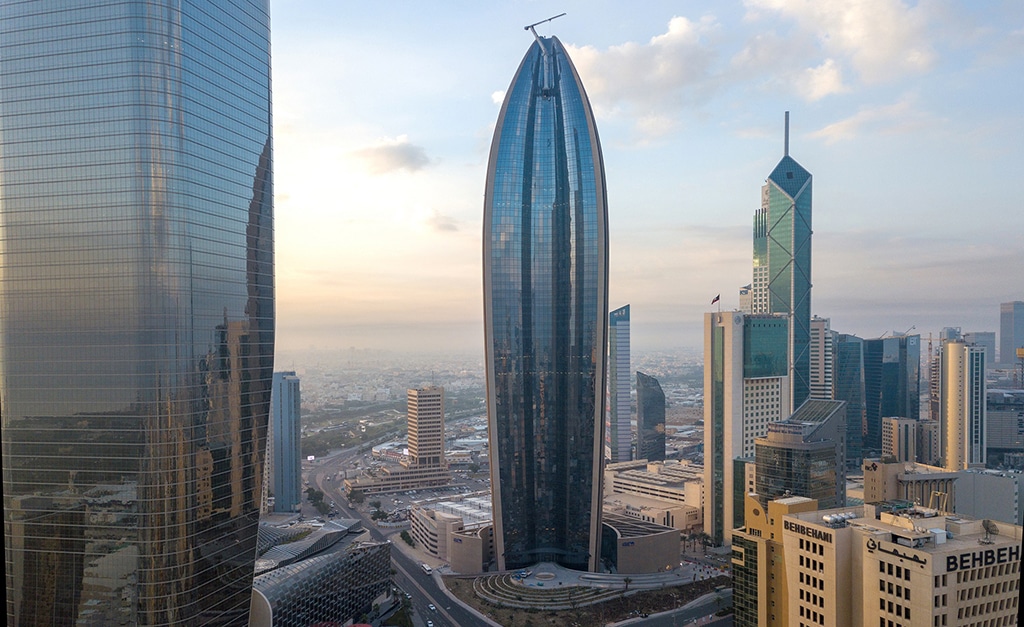KUWAIT: The IMF and World Bank held an annual meeting in Marrakech on Tuesday where the divergence between country groups economic recovery was addressed, as well as the financial risks associated with “higher for longer” interest rates. The IMF sees that there is a higher probability for central banks to tame inflation without causing a recession in the global economy, and is now expecting global economic growth to slow down from 3.5 percent in 2022, to 3 percent in 2023, and to 2.9 percent in 2024.
Meanwhile, global inflation is forecast to decline to 6.9 percent this year from 8.7 percent in 2022, and down to 5.85 percent in 2024. IMF chief economist Pierre Olivier Gourinc has added it was too soon to tell how the conflict in the Middle East “could affect economic growth in the region and the rest of the world.” US September PPI data was released on Wednesday, showing a higher than expected increase as final demand rose by 0.5 percent from the previous month, and 2.2 percent from the previous year, marking the third consecutive monthly increase.
While the cost of gasoline increased by 5.4 percent, PPI excluding food and energy showed a 0.3 percent monthly increase, while core PPI was up 2.8 percent from the previous year. This news release came in line with a drop in the 2-year and 10-year treasury yields as investors seek safer investment options and expect a pause on further tightening policies.
FOMC speakers
The FOMC meeting minutes and recent speeches by Fed and FOMC members emphasized the intent for Fed officials to keep rates unchanged for the time being as they forecast a slower pace of rate cuts to counter the stronger than expected economic activity. Fed Chair Jerome Powell stated that the primary driver for the decision of another 25bp rate hike would be dependent on the GDP growth, labor market conditions, and inflation, where GDP is currently expected to be at 2.1 percent for 2023, and to 1.5 percent for 2024.
Meanwhile, on Friday, Federal Reserve Bank of Philadelphia President Patrick Harker said that “absent a stark turn in what I see in the data and hear from contacts... I believe that we are at the point where we can hold rates where they are.” Additionally, Harker emphasized that “it will take some time for the full impact of the higher rates to be felt.”
Consumer price index
The latest CPI y/y data released from the US shows that inflation has been unchanged from August, as September’s figure came in at 3.7 percent. Economists believe that even though the latest numbers have been encouraging, especially when comparing inflation to COVID levels, it is still going to be a while before inflation returns to normal levels.
Gas prices rose by 2.1 percent in September, playing a key part in the latest inflation figure. Core CPI on the other hand fell from 4.3 percent in August to 4.1 percent in September on an annual basis. The index for shelter was the largest contributor to the monthly all items increase, accounting for over half of the increase. Meanwhile, the indexes for used cars and trucks and for apparel were among those that decreased over the month.
Unemployment claims
Unemployment claims came in at 209,000, unchanged from last week’s figure. The labor market remains to be tight in the US, adding to the worries of Federal Reserve. Employment continues to remain robust and seems to be able to withstand any “trigger” deployed by the Fed. The ever so tight labor market is the main reason behind the “soft-landing” narrative, as it shows that a recession might be avoided.
Consumer sentiment
The latest data to come out from the University of Michigan shows that consumer sentiment in the US dropped to 63 in October from 68.1 in September, well below the expected 67.4 figure. The outlook of consumers on the US economy has become more negative, with the expectations index falling from 66.0 all the way to 60.7. Additionally, the one-year inflation outlook rose from 3.2 percent to 3.8 percent, while the five-year inflation outlook also rose from 2.8 percent to 3.0 percent Activity in the UK services sector continues to lift UK economic growth.
GDP m/m has shown a growth of 0.2 percent for August, substantially up from July’s figure of -0.6 percent. In the three months leading to August, GDP increased by 0.3 percent, showing growth in all sectors. The main driver behind the increase in GDP for August was the services sector as its output rose by 0.4 percent. On the other hand, production output continues to fall in the UK. After dropping by 1.1 percent in July, production output dropped by 0.7 percent in August. Similarly, the construction sector also fell by 0.5 percent in August.
China consumer price index
Almost a year on from China’s reopening post COVID, the outlook does not seem any more positive, sending signals of worry to the global economy. The latest CPI data to come out of China shows that y/y inflation is at 0.0 percent. The world’s second largest economy is still flat lining after it was initially hoped that the reopening of China would replenish the global economy. Moreover, China’s trade activity has been trading lower with trade reports showing that imports and exports both fell for a fifth consecutive month. Despite expectations on China being downgraded, the economy continues to underperform, increasing fears that this might lead to a global recession.
Kuwait
Kuwaiti Dinar USD/KWD closed last week at 0.30870.











